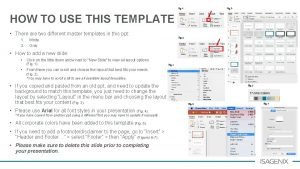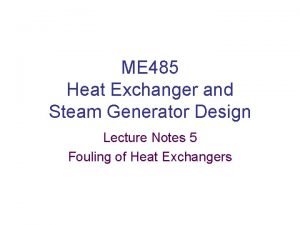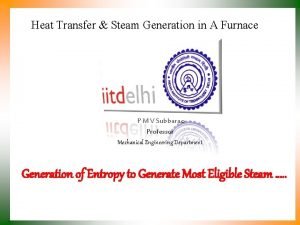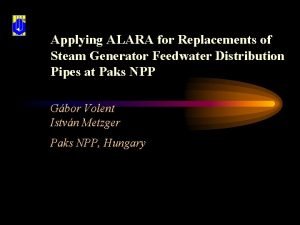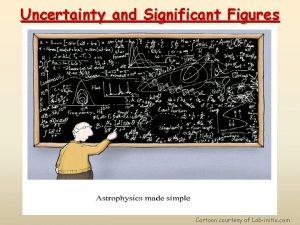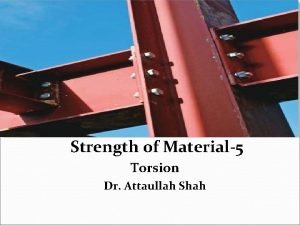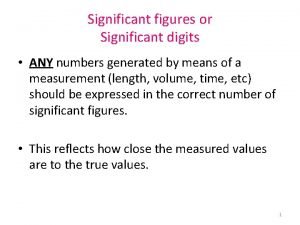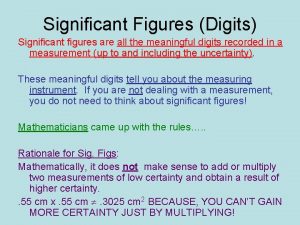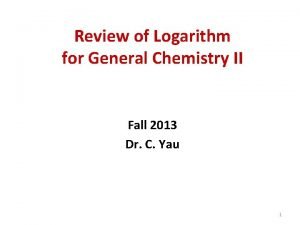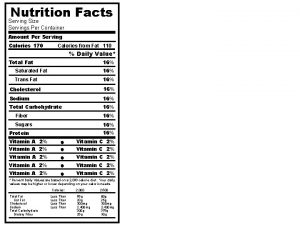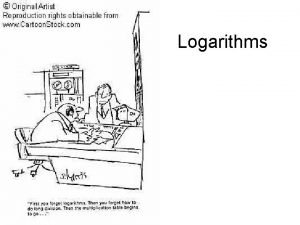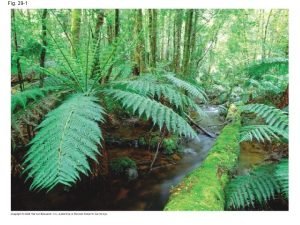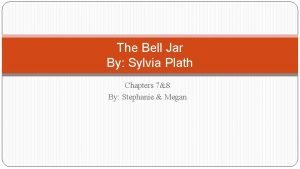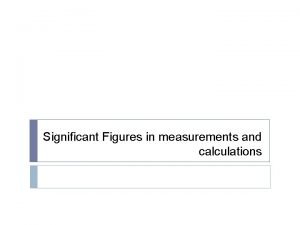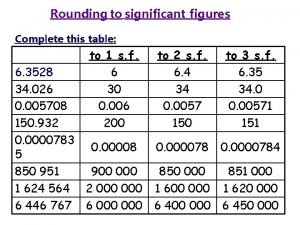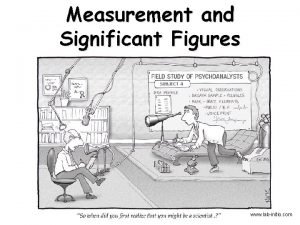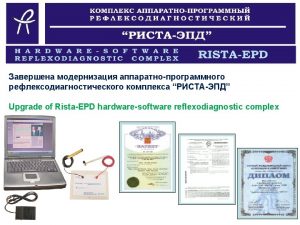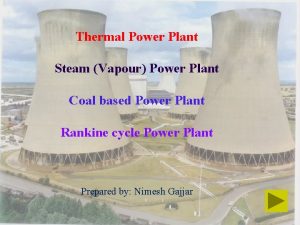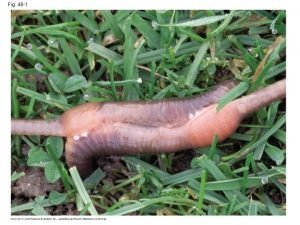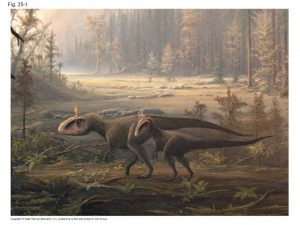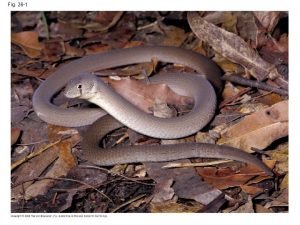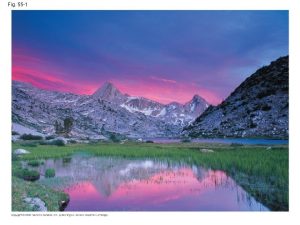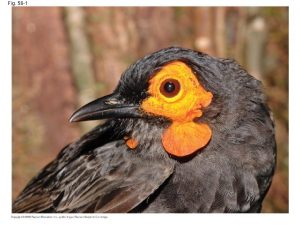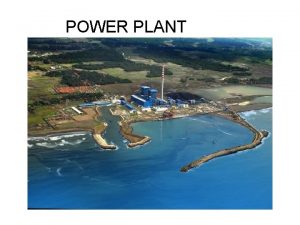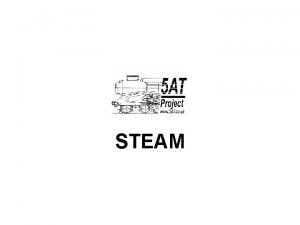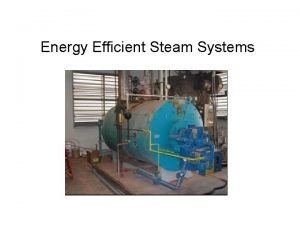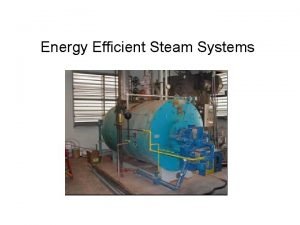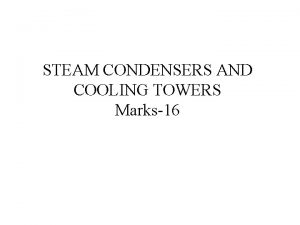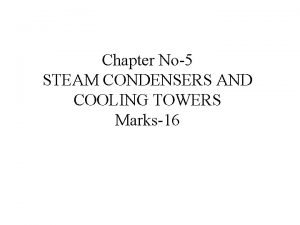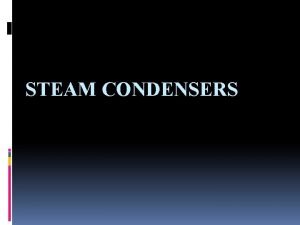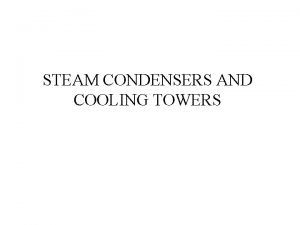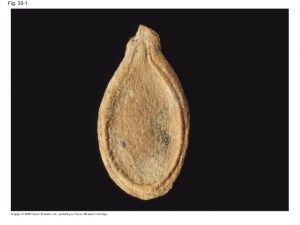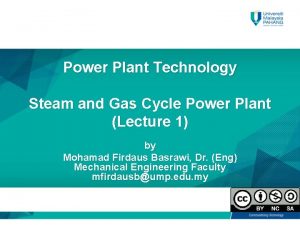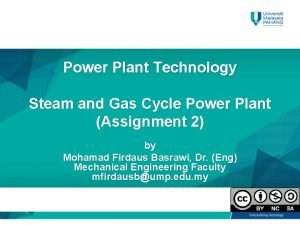STEAM CONDENSERS FIG STEAM POWER PLANT STEAM CONDENSERS

































- Slides: 33

STEAM CONDENSERS FIG: STEAM POWER PLANT

STEAM CONDENSERS Condenser is a heat transfer device in which the exhaust steam of a turbine is condensed by means of cooling water at pressure below atmospheric pressure.

CONDENSATION-Definition ØCondensation is a process in which steam is condensed to water at a pressure less than atmosphere. ØCondensation can be done by removing heat from exhaust steam using cooling water. ØDuring this the working fluid changes its phase from vapour to liquid and rejects its latent heat.

CONDENSATION-Functions Ø To reduce the turbine exhaust pressure so as to increase the specific output and hence increase the plant efficiency. Ø To condense the exhaust steam from turbine and reuse it as feed water in boiler. Ø It enables to remove of air and other non condensable gases from steam. Hence heat transfer rate can be improved.

CONDENSATE The condensed Steam is called Condensate and can be again returned to Boiler. It saves the cost of water.

PRINCIPLE OF CONDENSATION • In order to attain maximum work, according to Carnot principle, the heat must be supplied at Maximum pressure and temperature and should be rejected at Minimum pressure and temperature. V

ADVANTAGES OF CONDENSERS • It increases the work output per kg of steam supplied to the power plant. • Reduces the specific steam consumption. • Reduces the size of power plant of given capacity. • Improves thermal efficiency of power plant. • Saves the cost of water to be supplied to boiler.

ELEMENTS OF CONDENSING PLANT

ELEMENTS OF CONDENSING PLANT

ELEMENTS OF CONDENSING PLANT • AIR EXTRACTION PUMP: To remove air from the condenser, such a pump is called dry air pump. If air and condensate both are removed, it is called as wet air pump. • CIRCULATING PUMP: Used to supply feed water either from river or from the cooling tower pond to the condenser.

ELEMENTS OF CONDENSING PLANT • COOLING TOWER: 1. The Ferro concrete made device (hyperbolic shape) in which the hot water from the condenser is cooled by rejecting heat to current of air passing in the counter direction. 2. Ring troughs are placed 810 m above the ground level.

TYPES OF CONDENSERS • JET CONDENSERS The exhaust steam and cooling water come in direct contact and as a result the steam is condensed. It is also called direct contact condensers. • SURFACE CONDENSERS The cooling water flows through a network of tubes and the exhaust steam passes over these tubes. The steam gets condensed due to heat transfer to coolant by conduction and convection.

COMPARISION Jet condensers Surface condensers 1. Steam and water comes in direct contact. Steam and water does not come in direct contact. 2. Condensation is due to mixing of coolant. Condensation is due to heat transfer by conduction and convection. 3. Condensate is not fit for use as boiler feed until the treated cooling water is supplied. Condensate is fit for reuse as boiler feed. 4. It is cheap. Does not affect plant efficiency. It is costly. Improves the plant efficiency. 5. Maintenance cost is low. Maintenance cost is high. 6. Vacuum created is up to 600 mm of Hg. Vacuum created is up to 730 mm of Hg. S. No

JET CONDENSERS

CLASSIFICATION OF JET CONDENSERS 1. Low Level Jet Condensers i) Counter Flow Type ii) Parallel Flow Type 2. High Level Jet Condensers 3. Ejector Jet Condensers

1. (i) LOW LEVEL COUNTER FLOW JET INJECTOR

1. (ii) LOW LEVEL PARALLEL FLOW JET INJECTOR • Exhaust Steam & cooling water both flow in same direction • The mixture of condensate, coolant and air are extracted with the help of wet air pump. • Vacuum created in the condenser limits up to 600 mm of Hg.

2. HIGH LEVEL JET CONEDNSER/ BAROMETRIC JET CONDENSER • It is also called Barometric jet condenser since it is placed above the atmospheric pressure equivalent to 10. 33 m of water pressure. • Condensate extraction pump is not required because tail pipe has incorporated in place of it.

LOW LEVEL VS HIGH LEVEL

EJECTOR

3. EJECTOR JET CONDENSER • The cooling water enters the top of the condenser at least under a head of 6 m of water pressure with the help of centrifugal pump. • This system is simple, reliable and cheap. • Disadvantage of mixing of condensate with the coolant.

SURFACE CONDENSERS

Surface condensers are of two types • SURFACE CONDENSERS In this steam flows outside the network of tubes and water flows inside the tubes. • EVAPORATIVE CONDENSERS In this condenser shell is omitted. The steam passes through condenser tubes, the water is sprayed while the air passes upward outside the tube.

CLASSIFICATION OF SURFACE CONDENSERS • The number of water passes: 1. Single pass 2. Multipass • The direction of condensate flow and tube arrangement: 1. Down flow condenser 2. Central flow condenser

SINGLE PASS SURFACE CONDENSER STEAM IN COOLING WATER CONDENSATE OUT

DOUBLE PASS SURFACE CONDENSER STEAM IN COOLING WATER CONDENSATE OUT

DOUBLE PASS SURFACE CONDENSER • It consist of air tight cast iron cylindrical shell. • If cooling water is impure, condenser tubes are made up of red brass.

DOWN FLOW SURFACE CONDENSER • This condenser employs two separate pumps for the extraction of condensate and the air. • Baffles are provided so that the air is cooled to the minimum temperature before it is extracted. • The specific volume of cooled air reduces, thereby, reduces the pump capacity to about 50%. Therefore, it also reduces the energy consumption fro running the air pump.

CENTRAL FLOW SURFACE CONDENSER • Air extraction pump is located at the centre of the condenser tubes. • Condensate is extracted from the bottom of the condenser with the help of condensate extraction pump. • Provides the better contact of steam.

EVAPORATIVE CONDENSER • • • The exhaust steam is passed through the series of gilled tubes called condenser coils. Thin film of cooling water trickles over these tubes continuously from water nozzles. During the condensation of steam, this thin film of water is evaporated and the remainder water is collected in the water tank. The condensate is extracted with the help of wet air pump. The air passing over the tubes carries the evaporated water in the form of vapour and it is removed with the help of induced draft fan installed at the top.

MERITS AND DEMERITS OF JET CONDENSERS • 1. 2. 3. 4. 5. MERITS Less quantity of cooling water is required to condense the steam. Simple in construction and low in cost. Does not require cooling water pump. Less space is required. Low maintenance cost. • DEMERITS 1. The condensate is a waste. 2. Less suitable for high capacity plants. 3. Large length of pipes required, hence piping cost is high. 4. Loss of vacuum due to leakage of air from long pipings.

MERITS AND DEMERITS OF SURFACE CONDENSERS • 1. 2. 3. 4. 5. MERITS No mixing of cooling water and steam, hence the condensate directly pumped into the boiler. Any kind of feed water can be used. Develops high vacuum, therefore suitable fro large power plants. Require less power to run the air extraction and water extraction pump. System is more efficient. • DEMERITS 1. Require large quantity of cooling water. 2. System is complicated, costly and requires high maintenance cost. 3. Require large floor space since it is bulky.

THANK YOU IV UNIT COMPLETED
 Steam condensers
Steam condensers Kathy coover
Kathy coover Dry steam geothermal power plant
Dry steam geothermal power plant Steam generator heat exchanger
Steam generator heat exchanger Dittus-boelter equation
Dittus-boelter equation Steam steam generator erosion
Steam steam generator erosion Real power formula
Real power formula Plant introduction
Plant introduction Taichum
Taichum Plant introduction in plant breeding
Plant introduction in plant breeding Tronsmo plant pathology and plant diseases download
Tronsmo plant pathology and plant diseases download Tronsmo plant pathology and plant diseases download
Tronsmo plant pathology and plant diseases download Tronsmo plant pathology and plant diseases download
Tronsmo plant pathology and plant diseases download How to count significant figures
How to count significant figures The composite bar is firmly attached to unyielding supports
The composite bar is firmly attached to unyielding supports What is significant figures
What is significant figures Significant figures definition
Significant figures definition Significant figures conversion
Significant figures conversion Sig figs of logs
Sig figs of logs Significant figures
Significant figures The number of significant figures in 3400 is
The number of significant figures in 3400 is Sigfig rules
Sigfig rules Reduction oxidation
Reduction oxidation 1 cup serving size
1 cup serving size Ph sig figs
Ph sig figs Archegonium
Archegonium Why did jesus cursed the fig tree
Why did jesus cursed the fig tree Parable of the barren fig tree
Parable of the barren fig tree End times tree
End times tree The bell jar symbols
The bell jar symbols Significant figures games
Significant figures games Ruler sig figs
Ruler sig figs Significant figure
Significant figure Sig fig
Sig fig

